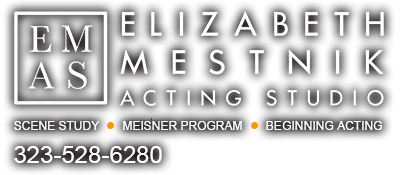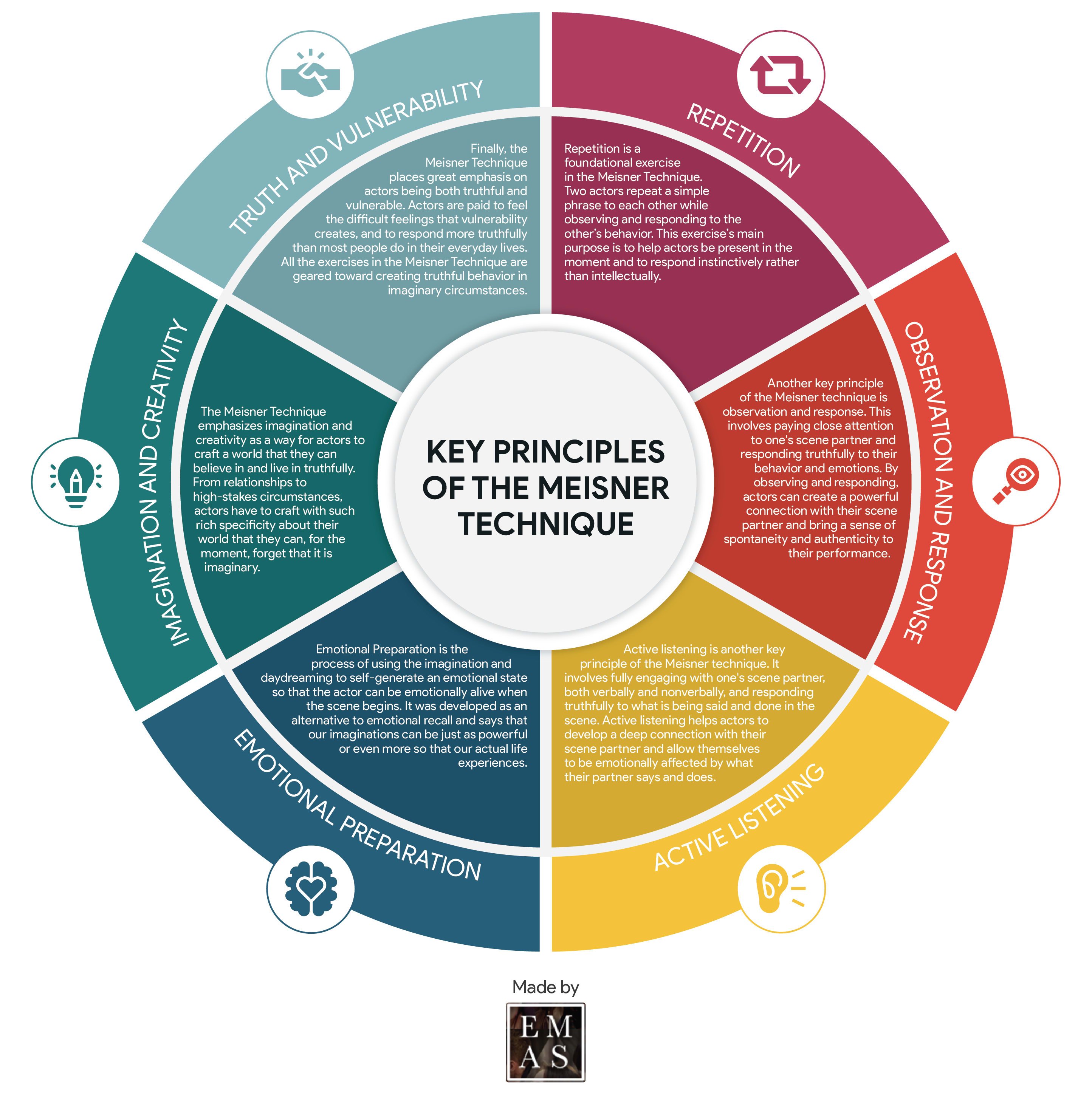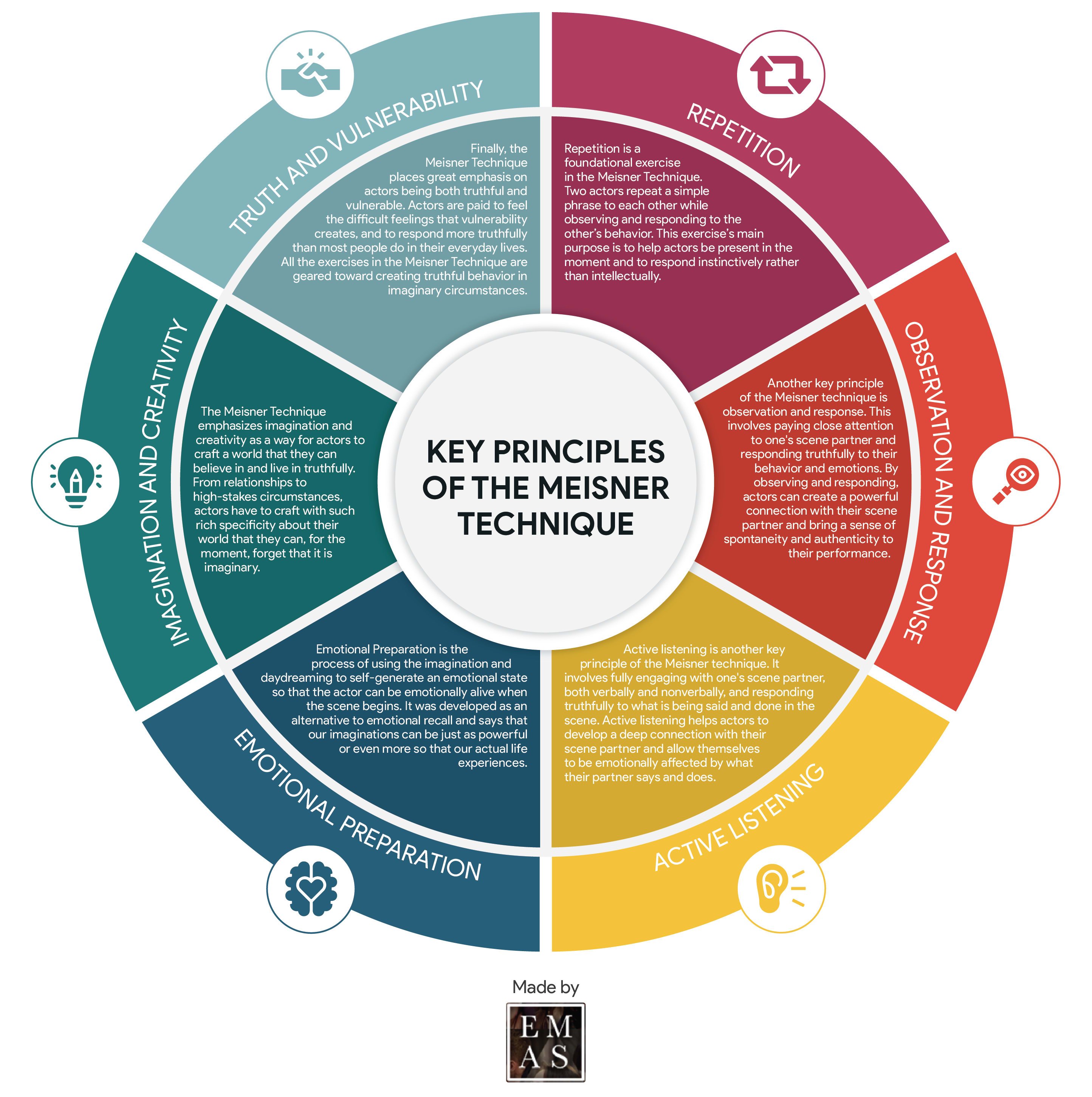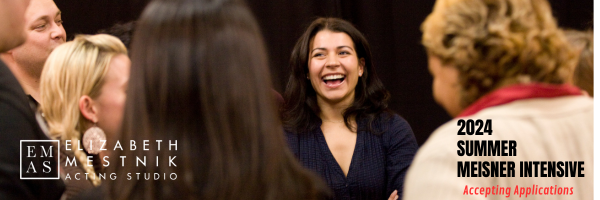Introduction
- Brief Overview of Meisner Technique: Start by providing a concise introduction to the Meisner technique, emphasizing its focus on realism and emotional honesty.
- Importance of Repetition Exercise: Highlight why the repetition exercise is crucial in Meisner training.
The Repetition Exercise Explained
- The Basics: Describe the basic structure of the exercise, where two actors repetitively exchange a phrase, focusing on each other’s behavior and reactions.
- Objective: Explain the objective of this exercise – to develop actors’ instincts for listening, reacting, and being in the moment.
The Power of Repetition
- Breaking Down Barriers: Discuss how repetition helps actors break down internal barriers and become more responsive to their scene partners.
- Building Authentic Responses: Illustrate how this exercise leads to spontaneous, authentic responses rather than pre-planned reactions.
Advancing the Exercise
- Progression: Detail how the exercise evolves over time, from simple repetition to incorporating emotional changes and physical actions.
- Application in Scenes: Show how the skills developed in this exercise apply to actual scene work.
Student Experiences
- Testimonials: Include quotes or stories from students who have experienced breakthroughs or significant learning moments through this exercise.
- Visuals: If possible, integrate photos or videos from your classes showing the exercise in action.
Conclusion
- Summarize the Value: Reiterate the importance of the repetition exercise in developing a Meisner actor’s skill set.
- Encouragement to Try: Encourage readers, whether beginners or experienced actors, to explore the Meisner technique and experience the power of repetition first-hand.
Call-to-Action
- Join a Class: Invite readers to sign up for a Meisner class at the Elizabeth Mestnik Acting Studio.
- Further Learning: Suggest additional resources, like books or videos, for those interested in deepening their understanding of the Meisner technique.
This blog post will not only educate aspiring actors about a key component of the Meisner technique but also serves to inspire and invite them to explore the method further under your guidance at the Elizabeth Mestnik Acting Studio.












